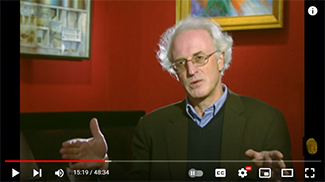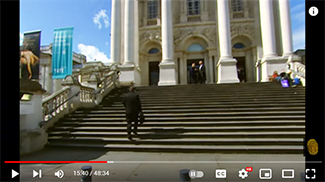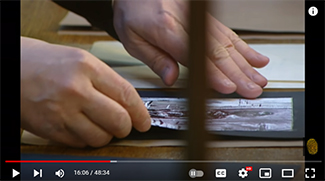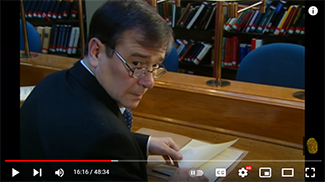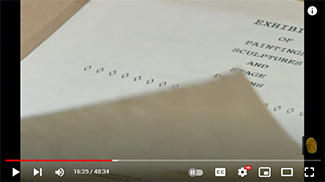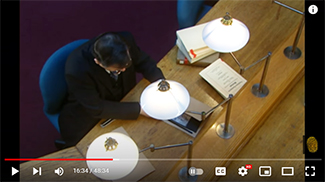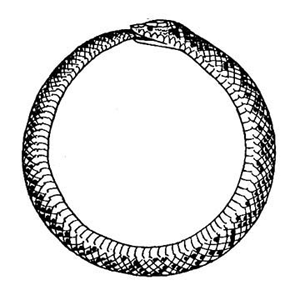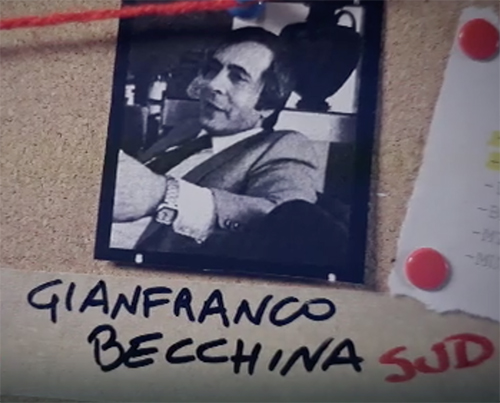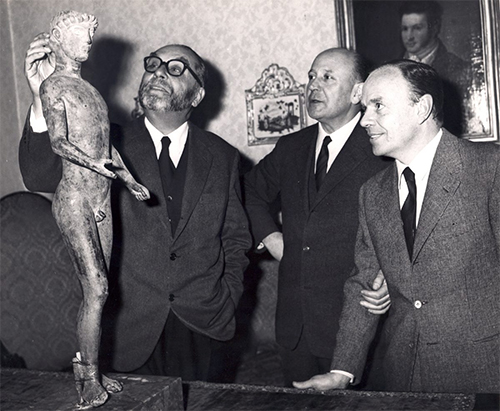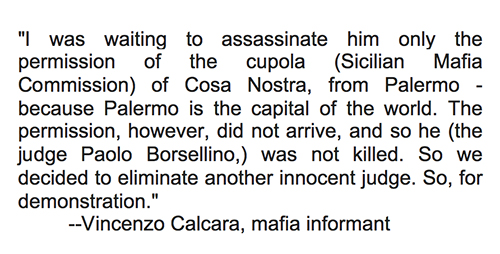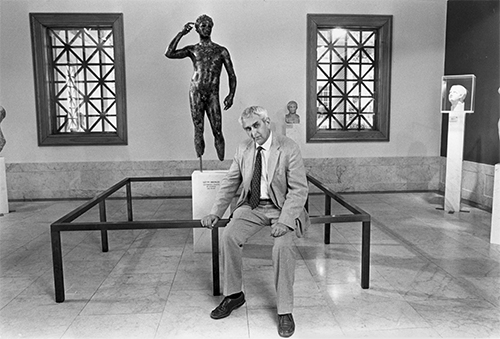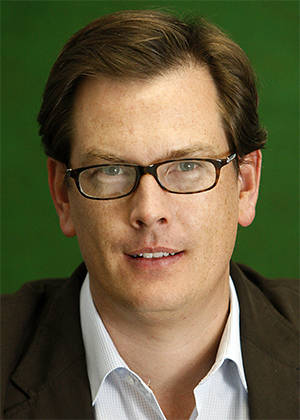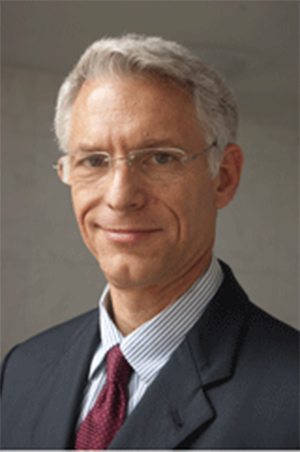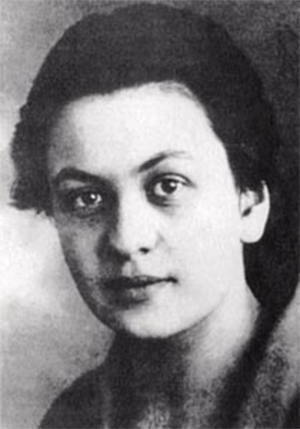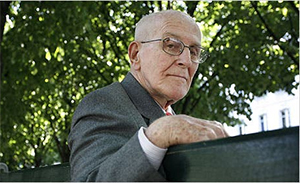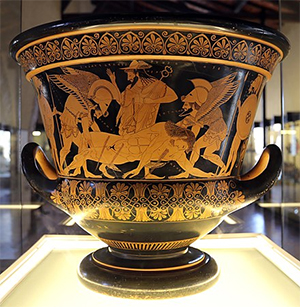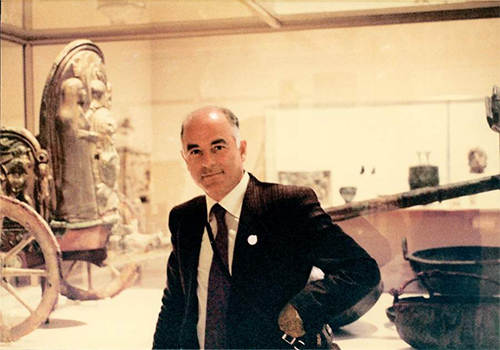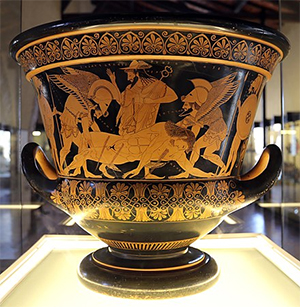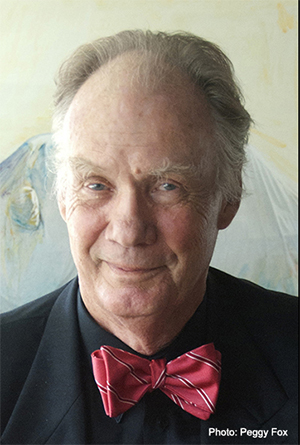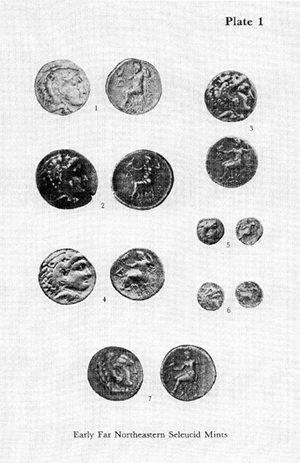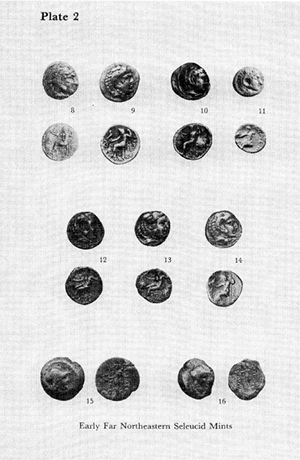by Ariel Sabar
The Atlantic
December 2021 Issue
November, 2021
NOTICE: THIS WORK MAY BE PROTECTED BY COPYRIGHT
YOU ARE REQUIRED TO READ THE COPYRIGHT NOTICE AT THIS LINK BEFORE YOU READ THE FOLLOWING WORK, THAT IS AVAILABLE SOLELY FOR PRIVATE STUDY, SCHOLARSHIP OR RESEARCH PURSUANT TO 17 U.S.C. SECTION 107 AND 108. IN THE EVENT THAT THE LIBRARY DETERMINES THAT UNLAWFUL COPYING OF THIS WORK HAS OCCURRED, THE LIBRARY HAS THE RIGHT TO BLOCK THE I.P. ADDRESS AT WHICH THE UNLAWFUL COPYING APPEARED TO HAVE OCCURRED. THANK YOU FOR RESPECTING THE RIGHTS OF COPYRIGHT OWNERS.
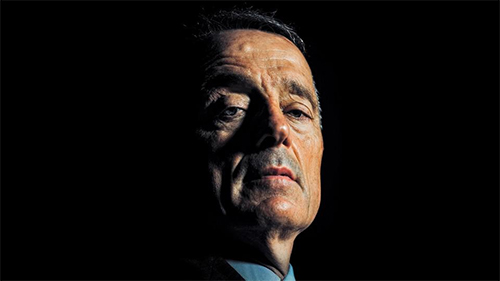
Malike Sidibe for The Atlantic
When Matthew Bogdanos got a tip about a looted mummy coffin whose corpse had been dumped in the Nile, he approached the coffin’s buyer—the Metropolitan Museum of Art—with few of the courtesies traditionally accorded New York’s premier cultural institution.
Bogdanos, a 64-year-old prosecutor in the Manhattan District Attorney’s Office, is chief of its Antiquities Trafficking Unit. The only one of its kind in the world, his squad of prosecutors, criminal investigators, and art specialists polices the loftiest reaches of New York’s art market—a genteel club of museums, collectors, and auction houses that buy and sell the relics of ancient civilizations.
People in Manhattan’s antiquities trade tend to carry themselves with an air of refinement. Bogdanos does not. He’s a retired Marine colonel and amateur middleweight boxer who likes to drive opponents “into the corner and beat the living shit out of them,” his trainer told me.
In the case of the Met’s mummy coffin, Bogdanos got off the phone with a smuggler turned informant in Dubai and, by day’s end, had opened a grand-jury investigation in Manhattan. He subpoenaed the emails, texts, and handwritten notes of every Met employee involved in the coffin’s purchase.
What Bogdanos found “shocked the conscience,” he told me. According to an official summary of the grand-jury investigation, the Met had acquired the golden first-century-B.C. coffin, for $4 million, despite what Bogdanos saw as a sea of red flags: three conflicting ownership histories, the involvement of known traffickers, a forged export license that bore the stamp Arab Republic of Egypt before the country used that name. The Met had allegedly deleted emails at the dealer’s request and deflected questions from Egypt. Smugglers had so hastily disposed of the coffin’s occupant—an Egyptian priest—that the museum’s conservators found a finger bone still stuck inside.
According to a 2019 search warrant, the Met was the probable site of criminal possession of stolen property in the first degree, a felony punishable by up to 25 years in prison. The intimation was that Met officials knew—or should have known—that the coffin was looted, but bought it anyway. (A Met spokesperson said the museum had been deceived by an “international criminal organization.” Though never charged, the Met apologized to the people of Egypt, reformed its acquisitions process, and forfeited the coffin to the DA.)
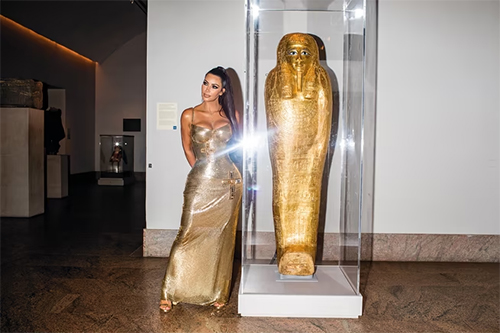
Kim Kardashian at the Met Gala in 2018, posing with a coffin that the Manhattan DA later discovered had been looted from Egypt (Landon Nordeman / Trunk Archive)
Over the past decade, Bogdanos and his agents have impounded more than 3,600 antiquities, valued at some $200 million. They’ve raided art fairs on Park Avenue, and Christie’s in Rockefeller Center. They arrested a dealer at the five-star Mark Hotel and seized statues on display at the five-star Pierre.
Tips from scholars, dealers, and other informants have repeatedly led Bogdanos to the Upper East Side. The enclave of old-money families along Fifth Avenue’s Museum Mile is America’s worst neighborhood for antiquities crime. It’s a long way, culturally, from Bogdanos’s New York. He grew up busing tables at his parents’ Greek restaurant in Kips Bay, and his court filings are salted with sarcastic, class-conscious asides. The problem with “these gentlemen of stature and breeding,” he told one judge, is that they “would never be so gauche” as to check the legal status of ancient art before buying it.
Some dealers have shut down rather than fight back. A 2019 journal article found that the number of ancient-art galleries with Manhattan storefronts had plunged over the preceding two decades from a dozen to three.
“If people in the trade are leaving New York, that speaks volumes about their own consciousness of guilt.”
Other Manhattan dealers continue to operate online or by appointment, but almost none has been spared Bogdanos’s subpoenas and search warrants. Sotheby’s ceased its New York auctions of ancient art in 2016, confining such sales to London. (Sotheby’s says this reflects “demand from collectors.”)
“Reputable galleries that have been in the business for a few decades or more have never seen an environment like this,” David Schoen, a lawyer for the venerable Safani Gallery (and also, incidentally, for former President Donald Trump at his second impeachment trial), told me. “It’s like being hit by snipers,” one person complained to The Art Newspaper.
When Bogdanos was 12, his mother, Claire, a waitress at the family restaurant, gave him a copy of The Iliad to stoke his pride in his Greek heritage. During his parents’ sometimes violent fights, he would take Homer’s epic into a closet and read it obsessively, electrified by Achilles’s rageful war on Troy. When I asked why the tale so moved him, he said, “Everyone acted with honor.”
After earning a law degree at Columbia, he stayed for a master’s in classics. His thesis was a psycho-historical study of how Alexander the Great galvanized followers despite being a genocidal alcoholic with parents who loathed each other. Of the masterworks of classical antiquity, he once said, “I don’t view them as literature,” but as “a travel guide for life.”
Bogdanos served as a military lawyer at Camp Lejeune for three years before joining the Manhattan DA’s Office in 1988 and becoming a top homicide prosecutor. When a jury returned an acquittal in his best-known case—the prosecution of the rapper Sean “Puffy” Combs in connection with a nightclub shooting—he took it as a personal failing and, he says, offered to resign. At the trial, Bogdanos had sat alone at the prosecution table, casting himself as a lone warrior against an army of high-powered defense attorneys. “But at times,” the Daily News reported, he “seemed more like a pit bull on the loose than a hero fighting the dark side.”
Six months later, on September 11, 2001, he was getting ready for work when an explosion rattled the windows of the building where he lived with his wife, Claudia, who is also a lawyer, and their young children. American Airlines Flight 11 had crashed into the North Tower of the World Trade Center, a block away.
Recalled to active duty, Bogdanos was tasked with improving security at the Kabul airport. He quickly got his hands on travel ledgers that led to the identification of hundreds of senior Taliban and al-Qaeda leaders, including 11 of the 25 most-wanted figures in the War on Terror. According to the citation for his Bronze Star, Bogdanos pulled off this improbable intelligence coup by “seizing unexpected opportunities and relying on his personal courage often at great personal risk.” He was promoted to colonel and named deputy director of the Joint Interagency Coordination Group, a counterterrorism team of agents from the armed forces, FBI, CIA, Treasury, and other agencies, under U.S. Central Command.
The group had decamped to a pair of southern-Iraq port cities in April 2003 when a scandal broke up north. Just days after the U.S. invasion of Baghdad, looters sacked Iraq’s national museum. The Pentagon was savaged for failing to protect the compound, which housed irreplaceable artifacts from the cradle of civilization.
Defense Secretary Donald Rumsfeld dismissed the controversy: “Stuff happens,” he told reporters. Bogdanos felt differently. “It just hit me in my gut … like a body blow,” he told me. “This stuff matters. It matters forever, and once it’s gone, it’s gone.”
He asked his superiors if he could borrow a dozen or so of his counterterrorism agents, drive them into downtown Baghdad, and get things under control at the museum.
“I said, ‘Well, that’s kind of a wild-ass idea,’ ” his then-commander, the retired four-star Air Force general Victor “Gene” Renuart Jr., told me. Historic preservation lay far outside Bogdanos’s counterterror mission. Bogdanos promised Renuart that the job would take just a few days, and Renuart relented, ordering the Marine not to get himself or anyone else killed. Bogdanos’s team bunked in the museum’s library and somehow extended the assignment to several months. Through a combination of amnesty offers and armed raids, the crew recovered thousands of antiquities across Iraq.
When Bogdanos got back to the States, he published a memoir called Thieves of Baghdad and shook hands with President George W. Bush, who awarded him a National Humanities Medal. A speaking tour and Warner Bros. movie option followed. Military leaders liked the press, but made clear to Bogdanos that his foray into war-zone museum protection was over.
Bogdanos had other plans. In speeches, interviews, and op-eds, he began promoting the notion that Iraqi insurgents were using the antiquities trade as a major revenue source—“a cash cow”—for terrorism. “In a modern-day version of the old ‘molasses to rum to slaves’ triangle trade,” he wrote in a New York Times op-ed in 2005, “the cozy cabal of academics, dealers, and collectors who turn a blind eye to the illicit side of the trade is in effect supporting the terrorists killing our troops in Iraq.”
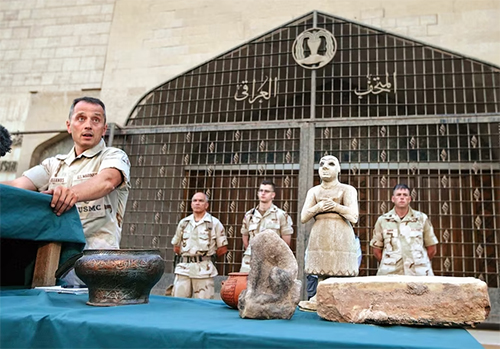
Bogdanos in front of the Iraq Museum in 2003, briefing the press on the status of missing antiquities (Behrouz Mehri / AFP)
He’d identified—or, as critics saw it, invented—an alarming link between his official duties and his personal obsessions. A Rand Corporation study last year found insufficient evidence for his claim. (There are stronger signs of organized looting in Syria by the Islamic State, though few objects appear to have reached major markets.)
“I have never said and never will say that all antiquities trafficking is funding terrorism—that’s absurd,” Bogdanos said in one of our Zoom interviews, anticipating my questions about the Rand report. “But some is, and some’s enough.” He had focused on terrorism, he said, to keep antiquities in the news after interest in the Iraq Museum waned.
He’d also begun plotting a new assignment back home. In the same 2005 op-ed, published soon after his release from active duty, he declared that he would return to the Manhattan DA’s Office the next year and “head the city’s first task force dedicated to investigating and prosecuting antiquities theft and trafficking.”
When I asked why that unit took 12 years to materialize, he acknowledged that he’d gotten ahead of himself. He said that then–District Attorney Robert Morgenthau had allowed him to pursue antiquities along with his other work. But Bogdanos had never asked about a task force, much less gotten approval for one.
So why had he pretended otherwise?
“You know how when you want something to happen, you say it as if it’s true?” he asked me.
Maybe some people do, I thought. But about your employer? In the Times?
On his first day back in the DA’s office, supervisors informed him that he could, in effect, “go fuck himself,” a high-ranking official in the Morgenthau administration told me. The antiquities unit “was completely a figment of his own imagination and his self-aggrandizing personality.”
In the end, Bogdanos prosecuted no antiquities cases under Morgenthau. He says his bosses rebuffed every request for a grand-jury investigation; those bosses, now retired, told me he never presented a viable case.
Undeterred, Bogdanos spent off-hours meeting with art dealers and law-enforcement agents, building contacts in hopes that one day things would change.
Morgenthau retired in 2009. Two years later [2011], Bogdanos received a visit from Brenton Easter, an investigator in the New York office of the Department of Homeland Security. Easter told him that a collector was bringing millions of dollars’ worth of suspect coins to the 40th New York International Numismatic Convention. The collector, a hand surgeon named Arnold-Peter Weiss, was a professor at Brown University’s medical school, a former treasurer of the American Numismatic Society, and a member of Harvard Art Museums’ collections committee.
Bogdanos began working his sources. He was at his family’s lakeside cabin in New Jersey on Christmas Eve when an officer he knew in the Italian Carabinieri called with the investigation’s missing piece: The coins, the officer told him, were Italian national property. Italy had never authorized their export.
Bogdanos called his supervisor, Karen Friedman Agnifilo: Could he set up a sting?
“You’ve lost your mind,” Agnifilo told him. Coin enthusiasts—“the nerdiest people”—hardly fit the criminal stereotype. “How sure are you about this?”
Bogdanos walked her through the evidence, and she gave the go-ahead. “It was indisputable,” she told me.
In January 2012, 10 officers in law-enforcement windbreakers raided the Waldorf Astoria.
Bogdanos and Easter prepped an informant to pose as a high-end buyer. Over pizza on the Upper East Side, Weiss told the informant about a rare coin—a fifth-century-B.C. tetradrachm bearing the head of Apollo. Weiss wanted $300,000 for it. “There’s no paperwork,” Weiss told the informant, according to the criminal complaint that Bogdanos’s team would file. “I know this is a fresh coin; this was dug up a few years ago.” (Weiss also knew that recently excavated coins were rightfully the property of the Italian government, he later admitted to a federal agent.)
A recording of the conversation—the informant was wearing a wire—seemed to give Bogdanos probable cause for arrest. But on what charge? Unlike federal prosecutors, who have broad jurisdiction over U.S. ports and customs, Bogdanos had only New York laws at his disposal. One of the plainest caught his eye: criminal possession of stolen property. The charge was typically brought against pawnbrokers, chop shops, and other businesses popular with thieves seeking no-questions-asked buyers. If a junkyard with an inexplicable surplus of copper wire could be charged, why not an antiquities collector with one too many Sumerian statues?
In January 2012, with the coin convention under way, 10 officers in law-enforcement windbreakers raided the Waldorf Astoria and arrested Weiss in the conference room where he had his booth. Weiss pleaded guilty to three misdemeanors, and the DA agreed to 70 hours of community service, a $3,000 fine, and a requirement that Weiss write an article for a numismatics journal on the perils of unprovenanced coins. In a twist, all of the coins that Weiss and investigators thought had been looted from Italy—including the tetradrachm—turned out to be fake, so the charges were reduced to attempted criminal possession of stolen property. The Manhattan DA gave the fakes to the Smithsonian Institution to educate federal agents and returned other coins to Greece.
In a single stroke, Bogdanos had criminalized common behavior in the coin world. But as precedent for a broader dragnet, it was limited. Weiss admitted knowing—or believing—that his goods had been looted. What of the far greater number of dealers and collectors who didn’t know, because they didn’t ask?
Willful ignorance—the “ostrich defense,” as Bogdanos calls it—is endemic in the antiquities trade. For much of the 20th century, few Westerners cared to look too closely at how an ancient object came to be removed from its homeland. The important thing was that it had found its way to Europe or America. The grand civilizations that had produced the art were long gone, leaving behind people too poor and ignorant to appreciate, much less protect, their own cultural heritage. So went the colonialist mindset.
Bogdanos needed to pierce the ostrich defense, and he found an awl in the same stolen-property law that had brought down Weiss. A little-noted provision, absent from the New York law’s federal counterpart, said that if dealers failed to make a “reasonable inquiry” into an object’s true ownership, those dealers were “presumed” to know it was stolen. Willful ignorance, in other words, was tantamount to guilt. Bogdanos’s team began seizing not just antiquities, but computers, cellphones, emails, notes, and other personal records showing whether buyers had taken anything more than the most perfunctory steps to investigate provenance.
One recurring target of his search warrants and subpoenas has been the billionaire financier and collector Michael Steinhardt, who has a Greek-art gallery at the Met named after him. Bogdanos’s team has carted off 80 antiquities, valued at more than $20 million, from Steinhardt’s Fifth Avenue office and apartment. It also took one he’d loaned to the Met: a 2,300-year-old marble bull’s head that militants had stolen from Lebanon four decades ago. Steinhardt has openly wrestled with the temptations of the trade.[!!!] Years earlier he’d lost a federal lawsuit over an illegally imported golden bowl from Sicily—after paying $1 million for the relic and another $1 million for lawyers. “It should have turned me off antiquities,” Steinhardt told an interviewer, “but it’s like an addiction.” (Steinhardt, who has not been criminally charged, did not respond to requests for comment.)
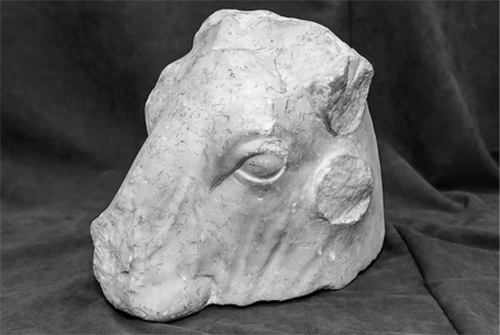
A 2,300-year-old marble bull’s head stolen by Lebanese militants.
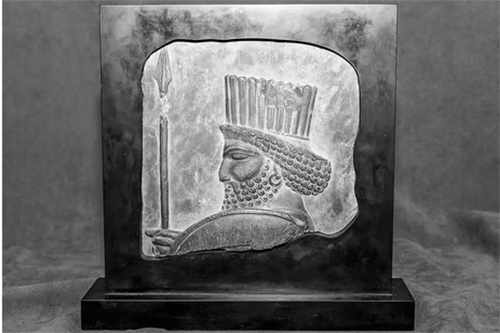
A 2,500-year-old limestone relief of a Persian soldier that Bogdanos’s team seized in 2017. (Manhattan District Attorney’s Office)
By 2017, Bogdanos had become so buried in antiquities work that he was sleeping in his office. Supervisors alerted Cyrus Vance Jr., the DA, to the swelling caseload, and that December Vance announced the formation of the Antiquities Trafficking Unit—the fulfillment of Bogdanos’s long-deferred fantasy. Vance obtained $2.2 million from a money-laundering settlement for five years of salaries. In addition to Bogdanos, its chief, who still spends at least half his time prosecuting homicides, the unit has three other assistant DAs, five analysts (with degrees in fields like art and archaeology), and two detectives, as well as half a dozen special agents from the Department of Homeland Security.
The DA’s office has returned more than 1,300 antiquities to their homelands: a marble sarcophagus fragment to Greece, a Buddha’s footprint to Pakistan, and, to Italy, a first-century mosaic from a ship in the emperor Caligula’s fleet. The rest, a couple thousand artifacts, occupy so much space that Bogdanos has taken to referring to their storage sites—in Manhattan, Brooklyn, and, until recently, Long Island City—as “wings.”
The unit’s biggest case is a sprawling 86-count indictment against the renowned Manhattan dealer Subhash Kapoor, who is now on trial in India on similar charges and has denied wrongdoing. In July, the DA extradited from the United Kingdom a restorer who cleaned Kapoor’s antiquities, in part to hide dirt, rust, and other signs of their recent theft. “I avoided asking questions,” the restorer told a New York court before pleading guilty, “because I was suspicious that the answers would reveal that the objects were stolen.”
Though the FBI has an art-crime squad and some countries have police teams that chase antiquities, Bogdanos’s group appears to be the only unit led by a prosecutor. Advocates say the distinction is crucial: Too many police probes of antiquities theft go nowhere because prosecutors lack the expertise or political will to take them on.
The problem is plainly visible, scholars say, at the Department of Justice, which has a history of treating ill-gotten antiquities as a civil matter. Federal prosecutors might sue to return relics to their homelands—a practice known as “seize and send”—but seldom charge the people who buy or transport them. This has been true even in cases as striking as Hobby Lobby’s import, a decade ago, of $1.6 million in illicit Iraqi artifacts, some in boxes labeled ceramic tiles. The arts-and-crafts chain paid $3 million to settle a federal civil action and has forfeited thousands of antiquities to the U.S. government. But federal prosecutors filed no criminal charges, even though the company had been warned against importing the objects by a hired expert.
The politics are especially delicate when collectors have reputations as public benefactors. More than 90 percent of the art in American museums has been loaned or donated by private collectors, a fact celebrated by the Association of Art Museum Directors as a “distinctly American tradition of philanthropy.”
Karen Friedman Agnifilo, who until her recent departure was Vance’s second in command, received a call a few years ago from a friend of someone whom Bogdanos was investigating. The caller described the target as “an important philanthropist, a good person,” and asked the DA to lay off. “I was appalled,” Agnifilo told me. “It showed me the world we’re dealing with: these very wealthy, very powerful, very connected people, some of whom think the law doesn’t apply to them.”
[Peter Nahum, Art Dealer] The point about authenticating a painting is, the first and most important thing is, looking at the picture, and judging the paint, the calligraphy, the way the brushstrokes are put on, and the color balance, etc., with authenticated works by the artist. The second most important thing, which is very important if the picture has provenance, histories of previous owners, especially if it takes you back to the artist, and also exhibitions the pictures have been in.
So provenance is very important.
[Jonathan Searle, Fraud Squad, New Scotland Yard] And if you've got the provenance that's there, and the provenances were very, very professional. I've never seen anything like it. And if I had been a dealer, I'd have most certainly been fooled.
[Narrator] And to make the scam work, John Drewe presented himself as a darling of the art world.
[Jonathan Searle, Fraud Squad, New Scotland Yard] John Drewe gave a donation of twenty thousand pounds to the Tate, and as a result of that, he was naturally thought of as a supporter of the arts. And he said he was interested in looking up the old archives -- which he did -- in the Tate. And he set to work. A very busy little bee.
To my knowledge, the type of forgery of archival material, has never been done to this extent with paintings. And not on such a scale, and not so audacious.
Because this was full-penetration of the Tate archives, and the V&A archives, and a number of other archives as well.
[John Myatt] He would fabricate catalogues of exhibitions, by taking a catalogue out of an archive, inserting one of my new paintings into the catalogue, returning it to the archive, and then a researcher will say, "Oh yes, well, you know, that was obviously exhibited in in Brighton Art Gallery, or something, And that is the history which validates the painting -- however poor the quality.
-- Inside Criminal Minds ... Con Men [The Cunning Genius Who Fooled The Art World: John Myatt], Narration by Anthony Wilson, by Real Crime
The Ouroboros or uroborus is an ancient symbol depicting a serpent or dragon eating its own tail.
-- Ouroboros, by Wikipedia
The galleries of the Upper East Side have proved a tougher testing ground in some ways than the battlefields of Baghdad.
When Bogdanos executes search warrants, it’s “like their heads explode,” he told me. “You can’t believe the number of times lawyers will come in and say, ‘All you had to do was call me up on the phone … It’s the way we’ve always done business, the way the feds have always done it. Closed door. No one has to know anything.’
“Are you kidding me? I wouldn’t do that for a drug dealer on 155th Street or a gunrunner on 187th Street, but I’m going to do it for your client?”
Bogdanos’s crackdown comes amid a broader reckoning over the West’s extraction of wealth from poor countries and people of color. The fiercest activists want Western museums to return all antiquities to their homelands, on the grounds that even legal acquisitions were tainted by colonial-era imbalances of money and power. Randall Hixenbaugh, one of Manhattan’s last surviving ancient-art dealers, told me that he has lost sales of well-provenanced objects, in part, he suspects, because sensational news stories have soured collectors on the entire sector. The push to make antiquities “unpalatable,” he contends, has less to do with the law than with an anti-European cultural politics.
Particularly galling to Bogdanos’s detractors are his seizures of antiquities that have circulated, unquestioned, for decades. Among them is a 2,500-year-old limestone relief of a spear-toting Persian soldier, valued at $3 million. In 2017 Bogdanos removed it from an art fair at the Park Avenue Armory, as its enraged British dealer sputtered curses. The object had been owned by the Montreal Museum of Fine Arts since the 1950s. Spurred by a tip from a scholar, Bogdanos’s team used archival records, decades-old photo negatives, and interviews in five countries to argue that the relief had been filched in the 1930s from an excavation in Iran. The British dealer and a colleague agreed to surrender the relief without admitting guilt, and in 2018, a New York judge ordered its repatriation.
If an object with seven decades of documented provenance could be labeled stolen, “then so can tens of thousands of other items in American museums,” Kate Fitz Gibbon, a lawyer who consults for art collectors, dealers, and museums, told me. Bogdanos is “applying standards today that simply didn’t exist in the past.” Some people have decided not to fight Bogdanos’s efforts to repatriate their art, even when they’ve done nothing wrong, Fitz Gibbon said. What spooks them are the stratospheric legal costs—and public opprobrium—if Bogdanos follows through on threats of criminal prosecution. A climate of fear, she said, is chilling the legal trade, imperiling the city’s vaunted cultural life.
Title, like a stream, cannot rise higher than its source. No one can, therefore, transfer a better title than he has, unless by the principle of estoppel the true owner is estopped to assert his superior title. One who has stolen a chattel cannot convey a good title, even to a bona fide purchaser.
-- Barthelmess v. Cavalier, 2 Cal.App.2d 477
Bogdanos counters that he’s not killing the market but saving it, by purging it of loot and effectively raising prices for pieces with unassailable provenance. Dealers who gripe about his clampdown are like pharmacists complaining about drug busts. “I’m ruining the illegal business,” he told me. “If people in the trade are leaving New York, that speaks volumes about their own consciousness of guilt.”
Bogdanos used to give interviews that sounded like closing arguments on Law & Order. “You want to know what will get the vast majority of them to stop?” he once said of unscrupulous dealers. Prison for “some 65-year-old person who has never seen the inside of a jail”—“a nice sentence among one of their own.”
Yet Bogdanos’s dream job, now that he has it, has been chastening. In all 11 of his antiquities convictions, the defendants pleaded guilty before trial. But none of those convictions resulted in prison, the one penalty that antiquities watchdogs had hoped to see more of.
The Met’s golden coffin had been the centerpiece of a new exhibit, visited by nearly half a million people. French officials used Bogdanos’s evidence to charge the coffin’s Paris dealers with money laundering, forgery, and fraud, and the Manhattan DA returned the relic to Egypt in 2019. But no Met employees were ever charged. The museum’s failures of due diligence were deplorable, Bogdanos told me, but fell short of a provable crime.
Nancy Wiener, a prominent Manhattan gallerist, pleaded guilty to three felony counts in September, after selling millions of dollars of stolen South Asian antiquities over more than a decade. She admitted in court that she had covered up evidence of theft by falsifying ownership histories and having a restorer rid objects of suspicious marks. Yet Bogdanos asked the judge to impose no penalty and no probation—nothing beyond the several hours she’d spent being fingerprinted and photographed at the DA’s office after her 2016 arrest. Her extensive help on other cases since then, he told the judge, warranted “evenhanded justice” rather than “absolute justice.”
I asked Bogdanos how he squared these nuanced outcomes with his once-strident calls for “shame and prison.” He rubbed a hand across his lips in a pained gesture, and there was a silence, the longest of our many interviews. “It’s a legitimate question,” he conceded.
Proving mens rea, a suspect’s guilty mind, has been harder than he imagined, he told me. He’s had to reconcile himself to extremely light sentences for some culprits in exchange for testimony against the worst offenders, most of whom have yet to face justice. And though New York is the world’s largest art market, some antiquities have slipped his grasp simply by crossing state lines. In the face of murders, robberies, and violent mayhem, few prosecutors outside his office—and truth be told, few in it—share his sense of urgency.
For a man who styles himself after the code-bound warriors of Greek myth, these deviations from the Platonic ideal haven’t been easy. The galleries of the Upper East Side have proved a tougher testing ground in some ways than the battlefields of Baghdad.
“Sometimes you have to make deals that make you sick,” he said.
This article appears in the December 2021 print edition with the headline “The Antiquities Cop.”
Ariel Sabar, a winner of the National Book Critics Circle Award, is the author of Veritas: A Harvard Professor, a Con Man and the Gospel of Jesus’s Wife.

